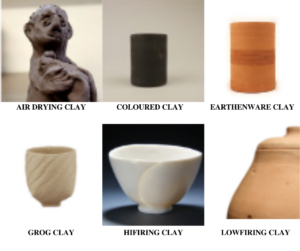A guide to using beginner pottery clay and professional pottery clay
Choosing clay suitable for pottery is essential to avoid damages to the final objects or craft during the heating process. Also, clay suitable for pottery offers strength to the objects or artifacts or products by making them long-lasting. You have options to choose from different types of clays that are available for pottery for beginners as well as professionals.
The price variation in the clay suitable for pottery has a direct impact on the final product price. If the pottery becomes too expensive, it will have less demand in the market. Thus, you should choose economical options while buying clay from a nearby shop. You have options to buy pottery clay online also on attractive discounts.
The professional pottery clay reacts differently based on the type of kiln used in the production process. Every clay has maximum temperature limits, which pottery makers should be aware of.

The temperature limits would make the clay stay wet even after placing them in the kiln at high temperatures, so the final product or the artifact will come out in broken pieces. In some cases, you may have to use more than one clay to get the right recipe for the pottery.
The following guide will help you in selecting the clay suitable for pottery :
Selecting the type of clay suitable for pottery
Every professional pottery clay has different characteristics. The minerals found in the professional pottery clay gives the clay its identity. The amount of plasticity, size of platelets, and firing temperatures are some of the clay’s essential features that make it useful for particular applications. You will find three different types of clays in the market:
- Earthenware
- Stoneware
- Porcelain
Each type of professional pottery clay has unique characteristics that make them suitable for applications that need strength and flexibility at the same time. Knowing about them in detail will allow you to use the professional pottery clay efficiently and produce a quality product out of it.
Texture
Based on the end-use of the professional pottery clay, you should decide what texture you want to achieve on the final product. Clay would contain different minerals, sand, grog, or may not have any of these elements. Every mixture generates a particular type of texture to the clay. Depending on the use, you can decide what professional pottery clay will suit your need.
Clay for throwing on the wheel
The clay suitable for pottery is sourced from fine grain that flows smoothly when placed on the wheel. Remember that the tiny grain particles of sand or rocks may cause injury to your hand while giving shape to the clay. Thus, you should be alert while choosing the clay suitable for pottery application.
Pottery professionals generally recommend porcelain clay for pottery making. It has a smooth texture and doesn’t hurt while using it for several hours. Read the instruction given on the package. If it contains sand, the seller would mention the ingredient and use it on the box.

About BotPots.com
The BotPots company offers facilities and great discounts to buy pottery clay online for different kinds of pottery applications. BotPots has the following types of clays to offer for pottery professionals:
- Speckled Clay
- Stoneware Clay
- Earthenware Clay
- Porcelain Clay
- Raku Clay
- Sculpture Clay
- Paper Clay
- Air-Drying Clay
- Low Firing Clay
- Mid Firing Clay
- High Firing Clay
- Terracotta Clay
- Colored Clay
- Off White Bodies
- Grog Clay
- Casting Slip
- Laguna Clay
- Primo Clay
- Potclays Clay
Summary
There are three main types of clay suitable for amateurish and professional pottery people:
- Earthenware
- Stoneware
- Porcelain
- Ball Clay
